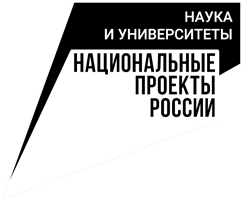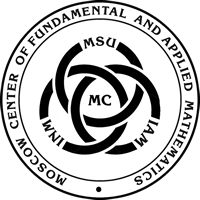163rd meeting of the seminar
«Mathematical modeling of geophysical processes: direct and inverse problems»
The seminar is devoted to the consideration of various aspects of mathematical modeling of physical processes in the atmosphere, hydrosphere and active layer of land, associated with solving problems arising in the study of the problems of climate change and the natural environment.
Seminar Organizing Committee
| Leaders: |
Doctor of Physics and Mathematics A.V. Glazunov (Marchuk Institute of Numerical Mathematics of RAS) Doctor of Physics and Mathematics I.A. Repina (A.M. Obukhov Institute of Atmospheric Physics of RA) Doctor of Physics and Mathematics V.M. Stepanenko (RCC MSU, Geographical Faculty of Moscow State University) |
| Secretary: |
A.V. Debolsky (RCC MSU, A.M. Obukhov Institute of Atmospheric Physics of RAS). |
PROGRAM
17:15
| A.V. Debolsky | RCC MSU, A.M. Obukhov Institute of Atmospheric Physics of RAS |
Numerical modeling of the atmospheric boundary layer at high latitudes.
The purpose of this work is to investigate and improve integral and local-indimensional atmospheric boundary layer (AAB) models used in weather and climate prediction models. For the validation we used data from numerical experiments of Large-Eddy Simulation (LES) in idealized formulations for convective, moderately stable and strongly stable atmospheric boundary layer.
For dry convective and shear-convective APS, a zero-order model was considered. The empirical constants of the integral APS model obtained from LES data for the case of free convection are in good agreement with previously published data of laboratory and numerical experiments. For the shear-convective case, parameterization of TKE generation due to velocity shift in the convective boundary layer in terms of friction velocity and average wind speed in the KPS is applied, which allows to formulate an integral model of shear KPS suitable for practical use.
First-order and two-parameter models were considered for steady and strongly steady stratification. The models were validated in idealized experiments in GABSL1 and van der Linden et. al (2019) formulations. It is shown that this approach, when setting the equilibrium state in two-parameter models consistent with Monin-Obukhov similarity theory, allows a more accurate reproduction of the main characteristics of weakly unsteady steady-stratified boundary layers. At the same time, the use of first-order closures using the same stationary and local generalization of TPMO insignificantly worsens the modeling results.
The selected first-order closures were implemented in the INMCM5 version of the RAS IWM climate model. This allowed us to reduce the error (with respect to the reanalysis) in the surface characteristics when reproducing the current climate. To further improve the parameterizations of turbulent mixing in the APS, first-order closure constants were optimized based on data from a set of numerical experiments with the LES model. The use of the optimized version of the closure in the climate model insignificantly improved the reproduction of the surface characteristics of modern climate.
The seminar will be held in the form of a webinar on the Zoom platform.
Topic: семинар "Математическое моделирование геофизических процессов: прямые и обратные задачи".
Time: June 1, 2023 05:15 PM Moscow (GMT+3)
Meeting ID: 849 8727 3699
Passcode: 761692
For communication on all issues related to the work of the seminar, please contact the academic secretary Andrey Vladimirovich Debolsky at and.debol@srcc.msu.ru

